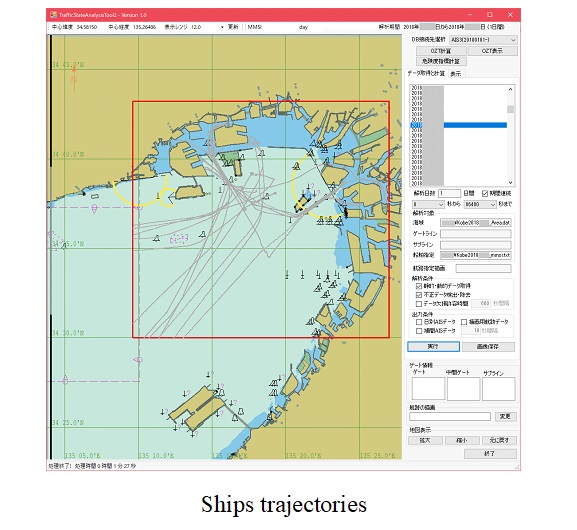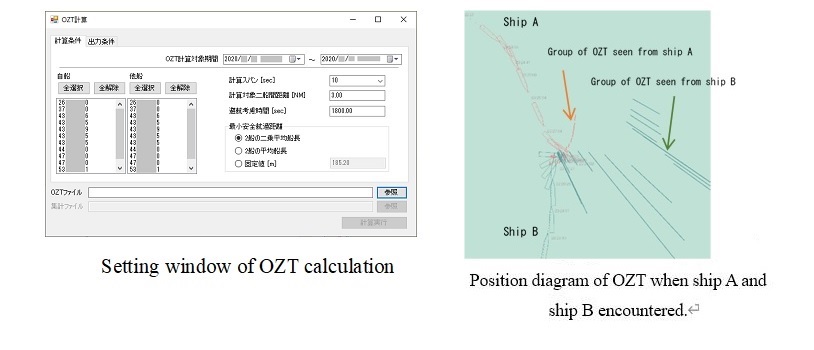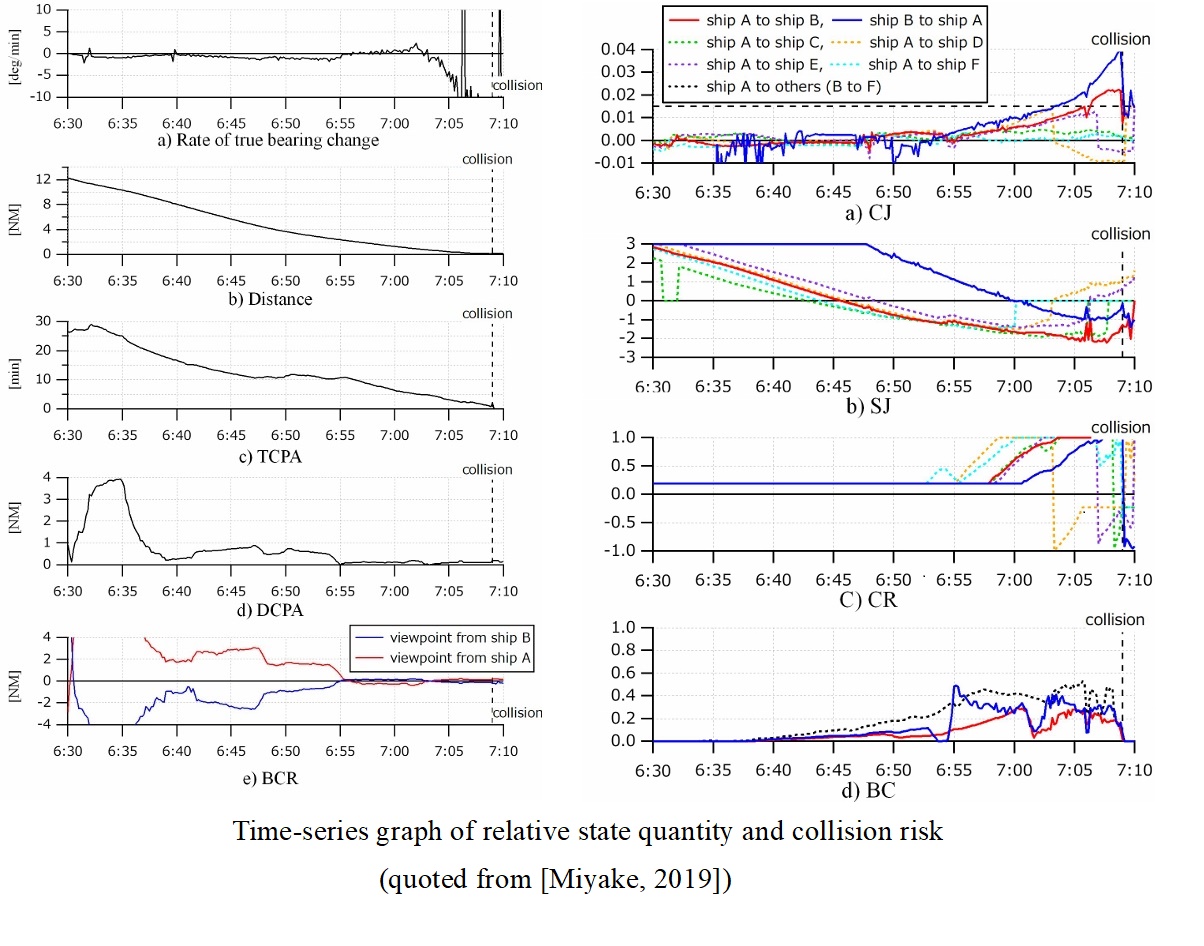Analysis Program for Automatic Identification System
"TrafficStateAnalysisTool 2" ver. 1.0
TRAFFIC STATE ANALYSIS TOOL
TrafficStateAnalysisTool2 (TSAT 2) is an analysis program of AIS data to investigate ship traffic volume and analyze collision accidents.
AIS (Automatic Identification System) is an exchange system of navigational data between ships as well as between ships and shore stations, including static data (ship name, ship type, and ship size, etc.), dynamic data (position, speed, and course, etc.), and safety-related message.
Functions
-
– Preparations for Analysis
- ♦TSAT2 removes outliers from the AIS data.
- ♦TSAT2 regenerates synchronous data from AIS data at any time interval.
-
– Analysis For Marine Traffic Circumstances and Collision Accidents
- ♦Drawing ship trajectories
- ♦OD (Origin and Destination) survey: Marine traffic situation such as number of ships and sailing speed is analyzed. The survey results help us understand the state of maritime traffic.
- ♦Calculation of OZT (Obstacle Zone by Target): OZT is an area that represents the position of possible collision in the future between given two ships. TSAT2 calculates the OZT position, outputs a file, and draws the map of the OZT position using the outputs file. OZT helps evaluate collision risk in the investigation of collision accidents.
- ♦Calculation of relative state quantity: TSAT2 calculates the relative state quantity between two given ships and outputs a file. Relative state quantity helps evaluate the navigational condition objectively in investigating collision accidents.
- ♦Calculation of collision risk: TSAT2 calculates collision risk by indices presented in academic journals. Collision risk helps investigate collision accidents.
Sample of TSAT2 Viewing
System Requirements
- - OS: Windows 10 (64bit)
- - memory: 2GB and more
Inquiries regarding TSAT
E-mail: tizai@m.mpat.go.jp
References
R. MIYAKE et al. : Assessment of Situation Awareness on Collision Accident Involved Container Ships, Journal of Japan Institute of Navigation, vol. 140, pp.68-76, 2019.



